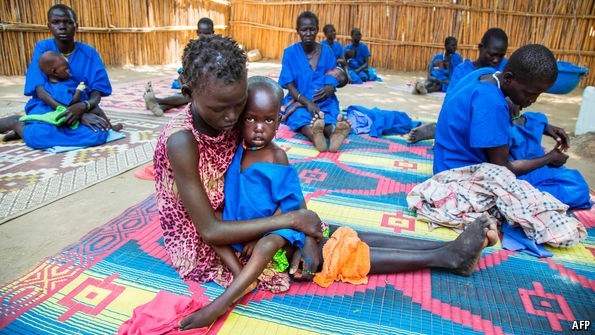
Tuesday April 4, 2017

The UN relies on technocratic calculations but politics still plays a part
IN FEBRUARY the United Nations made the first formal declaration of famine since 2011. Parts of South Sudan, the world’s newest country, are now officially in a state of famine. The UN says that some 20m people are also at risk of famine in Nigeria, Somalia and Yemen.
In the past, writes Alex de Waal, a veteran researcher of famines, “a rookie aid worker or journalist, a politically partisan advocate—or a team of seasoned nutritionists and humanitarian professionals—could use the word ‘famine’ as they wished.” But these days, it tends to have a technical definition.
The United Nations uses the “Integrated Food Security Phase Classification”, or just the IPC scale. This system is based on geographical areas and places them into one of five categories, from minimal (where most people can get enough food without aid, but some are having to, for example, sell their livestock to survive) all the way through to full famine (where, even with what humanitarian assistance is available, a large number of people are starving to death).
The idea of the IPC scale, which was developed in 2004, is to make famine technocratic. For a region to be declared in IPC phase five—full famine—it has to meet certain criteria, detailed in an extensive 125-page manual.
For example, the overall death rate due to lack of food must be over two per population of 10,000 per day, and the death rate for children under the age of five (who are most vulnerable to food shortage) must be over four per 10,000 per day.
What this means is that data must be gathered extensively. In countries affected by severe food insecurity, UN agencies such as the World Food Programme and Unicef conduct “smart” surveys, going house to house, weighing children and asking about food intake and deaths in the family.
In practice however, it is not so scientific as it seems. Interpreting data is difficult: for example, any specific count of “hunger-related” deaths can be questioned.
And more importantly, collecting data in countries where people are starving is difficult, because they are often at war. So where fresh data are missing, experts use proxies, such as the number of malnourished children arriving at clinics, to try to extrapolate what the real figure is.
That makes declarations of famine more political than they might appear. South Sudan may well have been in famine last year, Mr de Waal writes, but a declaration was resisted before now, partly by a South Sudanese government official sitting on the IPC body.